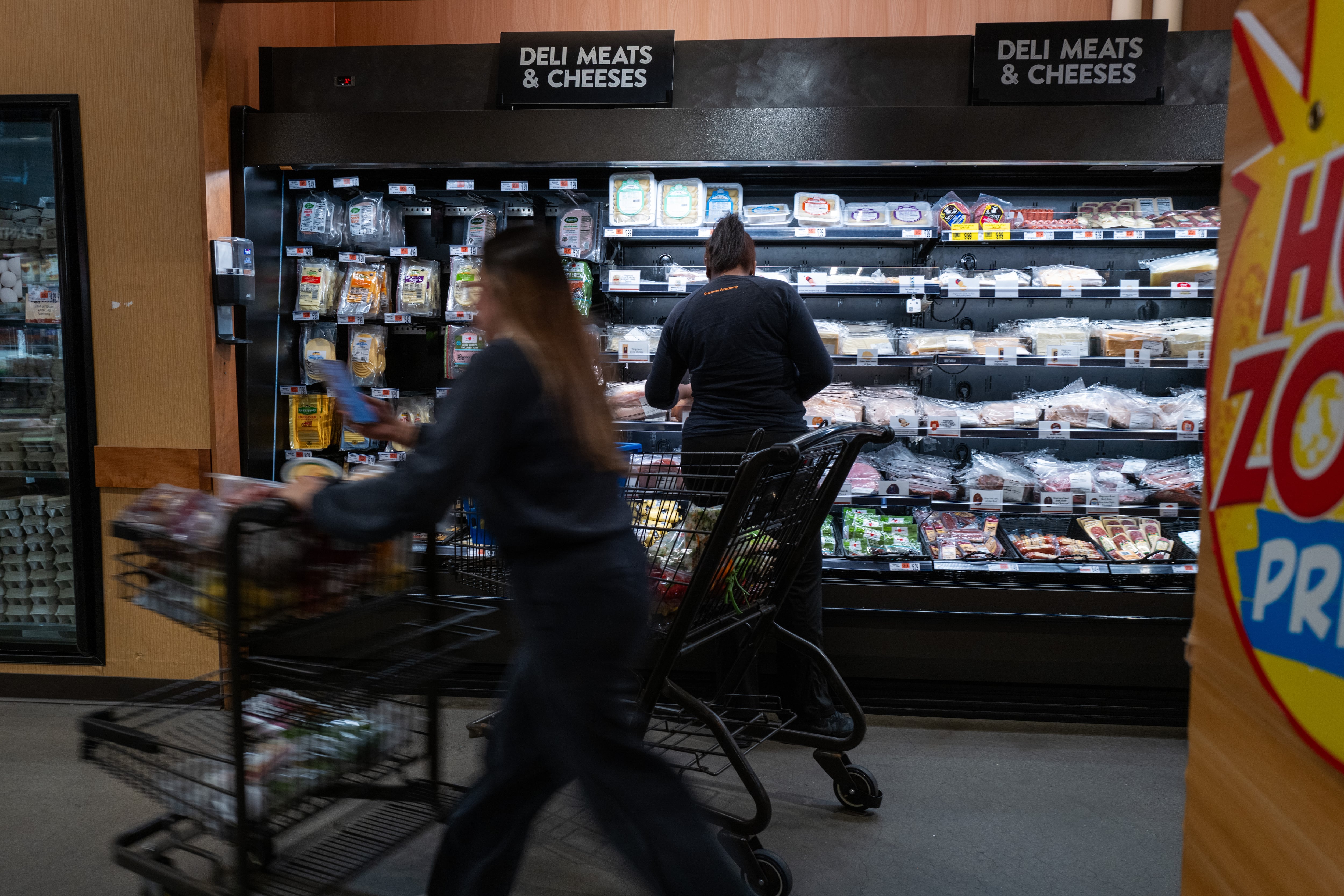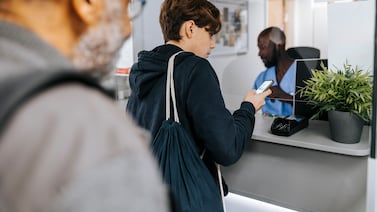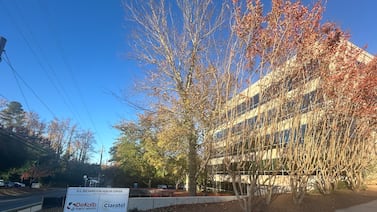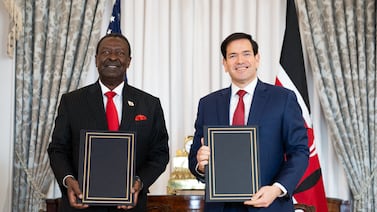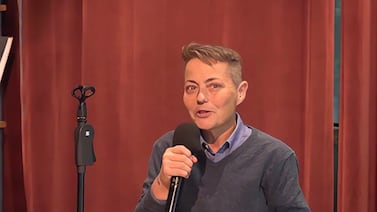This article originally appeared at Your Local Epidemiologist New York. Sign up for the YLE NY newsletter here. Public health, explained: Sign up to receive Healthbeat’s free New York City newsletter here.
I’m back on the New York health beat after a week of global biosecurity workshops at the World Health Organization and the United Nations (a huge thank you and shoutout to the Johns Hopkins Emerging Leaders in Biosecurity program!) — and a much-needed vacation. Conversations ranged from cross-border collaboration to public health surveillance and crisis communication.

But I’m still thinking about one moment in particular: standing in front of the UN inscription from the 1948 Universal Declaration of Human Rights. “All human beings are born free and equal in dignity and rights.”
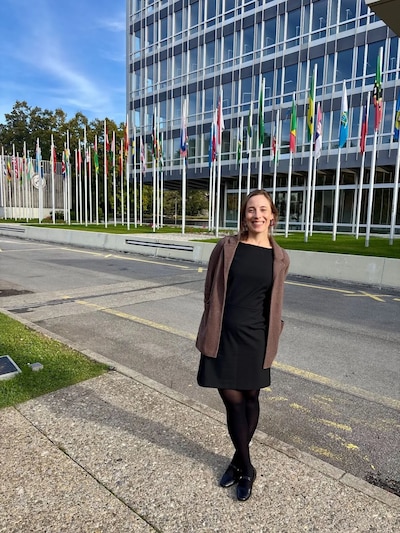
It was a powerful reminder that public health isn’t just global, it’s local. What we build here in New York echoes far beyond our borders. And the basics still matter. Dignity, rights, and health begin with access to the essentials: housing, health care, and food.
So let’s talk about food — specifically, city-owned grocery stores, which have come up repeatedly in the New York City mayoral race. Through FAQs, I’ll break down what they are, their track records in other cities, and where mayoral candidate s stand. (During the primary election, I broke down some of the health-related topics candidates supported or opposed here.)
And as a reminder, the city’s mayoral general election is less than two weeks away! Here are key dates to get on your calendars:
- Voter registration deadline: Saturday
- Vote by mail application deadline: Saturday
- Early voting: Saturday-Nov. 2
- Election Day: Nov. 4
Let’s jump in.
What are city-owned grocery stores?
City-owned groceries, sometimes called “city-run groceries” or “public option groceries,” are supermarkets owned or operated by a city. Because of city ownership and operation, these stores often don’t need to pay rent or property taxes, and can buy foods wholesale, reducing overhead costs and increasing savings for shoppers. Cities can also support them with free utilities or direct subsidies.
If the city itself owns the building or land, it’s automatically exempt from property taxes — publicly owned property used for a public purpose isn’t taxed under New York State law. When a municipality owns and operates a facility (like a library or firehouse), it doesn’t pay taxes to itself.
Why is this a public health issue?
A major goal of establishing city-owned groceries is to make food, and importantly nutritious foods, more accessible. Food prices in New York City have soared, rising faster than the national average, up 56% between 2012 and 2023, compared to 46% nationally. (Income has also increased in the city, but it’s not keeping up with climbing food costs.) At the same time, food insecurity — when someone doesn’t have enough to eat at least some of the time — affects 1.2 million New Yorkers in the city. This is up 76% since 2021, with 1 in 6 households with children lacking enough to eat. The figure is higher than the 55% increase seen nationwide.
In New York City, rates are highest in the Bronx, where 1 in 5 residents and 1 in 3 children experience food insecurity. Staten Island has the lowest, with 11.5% of residents experiencing this problem.
This isn’t just a big-city issue. Across New York state, 1 in 8 (12.5%) of residents lived in food insecure households from 2021 to 2023, including 1 in 6 children. On top of that, cuts to the Supplemental Nutrition Assistance Program in the “Big Beautiful Bill” — signed into law over the summer — will likely further exacerbate food insecurity in New York, as they reduce food assistance for low-income families.
But the issue runs deeper than not having the income to pay for enough food. Many neighborhoods don’t even have grocery stores. Several New York neighborhoods are considered “food deserts” — where it’s difficult to buy healthy, nutritious food at an affordable price. These deserts often occur when large grocery companies avoid investing in lower-income neighborhoods because they have less purchasing power compared to wealthier neighborhoods, despite high demand for groceries.
A way to measure this in New York City is to look at the ratio of bodegas to supermarkets across neighborhoods. The Bronx, which has the highest food insecurity in the city, has about 35 bodegas per 1 supermarket.
With these challenges in mind, mayoral candidates are proposing various solutions to address food insecurity and improve access to healthy, affordable food across the city.
What are the candidates proposing?
Mamdani
Zohran Mamdani, an assembly member and mayoral hopeful, has proposed opening five city-owned stores (one in each borough) at an estimated cost of $60 million. The idea is to place them in areas where private grocers won’t go, sell food closer to wholesale cost, and exempt them from rent and property taxes.
Cuomo
Former Gov. Andrew Cuomo has opposed city-owned groceries, and instead proposes a $250 million targeted subsidy program for about 350,000 New Yorkers whose income is just above SNAP eligibility (around 131% to 150% of the federal poverty line). Under his plan, benefits would scale by income — roughly $1,200 a year for a family at the low end.
His rationale is that aid should go directly to families, not into running a government grocery chain. He also believes that city-owned grocery stores could undercut or compete with small grocers and bodegas.
This puts Cuomo in contrast to Mamdani’s approach. He prefers benefits that follow families in specific income brackets, while Mamdani’s plan aims to shift the supermarket structure itself.
Sliwa
Republican candidate Curtis Sliwa has criticized the public grocery store model as government overreach. His proposal to combat food insecurity does not detail specific plans, but includes pushing for bridge funding to cover cuts to the SNAP program, reducing red tape for food distributors, and improving access to wholesale markets for small grocers.
Does NYC already have city-owned markets?
Yes. The city runs Essex Market on the Lower East Side, La Marqueta in East Harlem, and Moore Street Market in Williamsburg. These are smaller public markets rather than full-service supermarkets, but they provide a precedent. There are three other public retail markets, which are directly managed by the housed tenants.
The city’s Economic Development Corporation has tax and zoning subsidies granted to developers and grocers willing to open in so-called food deserts. In other words, public dollars already flow to the grocery sector in New York City — just indirectly.
Where else have city-owned groceries been tested?
Most city-owned grocery stores in the United States have been in rural communities:
- St. Paul, Kansas, a town of 600, has a city-run grocery store that’s been in operation since 2008.
- Baldwin, Florida, a town of roughly 1,400, operated its own supermarket after private chains left. The market closed last year due to lack of customer support.
- Madison, Wisconsin signed a lease for a city-owned grocery store in late 2024, but it has not yet opened.
Some big cities are beginning to experiment with city-owned grocery stores.
- Atlanta opened a city-owned grocery store this summer in a USDA-designated low-income, low-access neighborhood. During its first two months, it served over 20,000 customers. During its first month, fresh produce sales represented 11.6% of its sales, higher than the national average of 10%.
- Chicago is exploring options for a public-run market, where multiple vendors could sell groceries and local produce.
Would city-owned grocery stores hurt small businesses?
Potentially. City-owned grocery stores could move customers from bodegas and small supermarkets. But supporters argue that city-owned stores should be strategically placed in true food deserts, where access to more grocery options is needed, and designed to complement, not compete with, neighborhood grocers. It’s not totally clear to me how they would be designed to not compete with bodegas or small grocery stores, though. I would like to see Mamdani clarify this.
Where would the money to fund this come from?
The short answer is that we don’t know. It could be reappropriated from FRESH funding, which already supports increasing availability of fresh foods in underserved neighborhoods. It could come from other city funds. Or possibly from new appropriations or tax revenue. No information has been provided on where funding for these new grocery stores would come from.
What are my thoughts?
Food insecurity is a serious and growing issue in New York. Too many families can’t afford nutritious food, or can’t access it where they live. It’s time for our leaders to step up. If that is through city-owned grocery stores, great, but we need clear and defined plans for how to pay for them, where they’ll be located, and how to minimize competition with small local businesses.
If the solution is through direct financial support to families, also great. But funding alone isn’t enough — we still need to ensure access. The problem won’t go away if we expect families to commute long distances to get groceries.
And New Yorkers are on board. Two-thirds of New Yorkers support city-owned grocery stores, with 85% reporting their grocery bills have gone up in the past year.
Personally, I lean slightly toward city-owned grocery stores because the proposal addresses both affordability and access.
Bottom line
We need to do something to reduce food insecurity. City-owned grocery stores could be a great option, but we need additional details on how they would be paid for, sustainability plans, and how to reduce competition with smaller markets and bodegas. Access to healthy food should not be optional — it’s a human right for all New Yorkers.
Love,
Your NY Epi
Dr. Marisa Donnelly, PhD, is an epidemiologist, science communicator, and public health advocate. She specializes in infectious diseases, outbreak response, and emerging health threats. She has led multiple outbreak investigations at the California Department of Public Health and served as an Epidemic Intelligence Service Officer at the Centers for Disease Control and Prevention. Donnelly is also an epidemiologist at Biobot Analytics, where she works at the forefront of wastewater-based disease surveillance.

